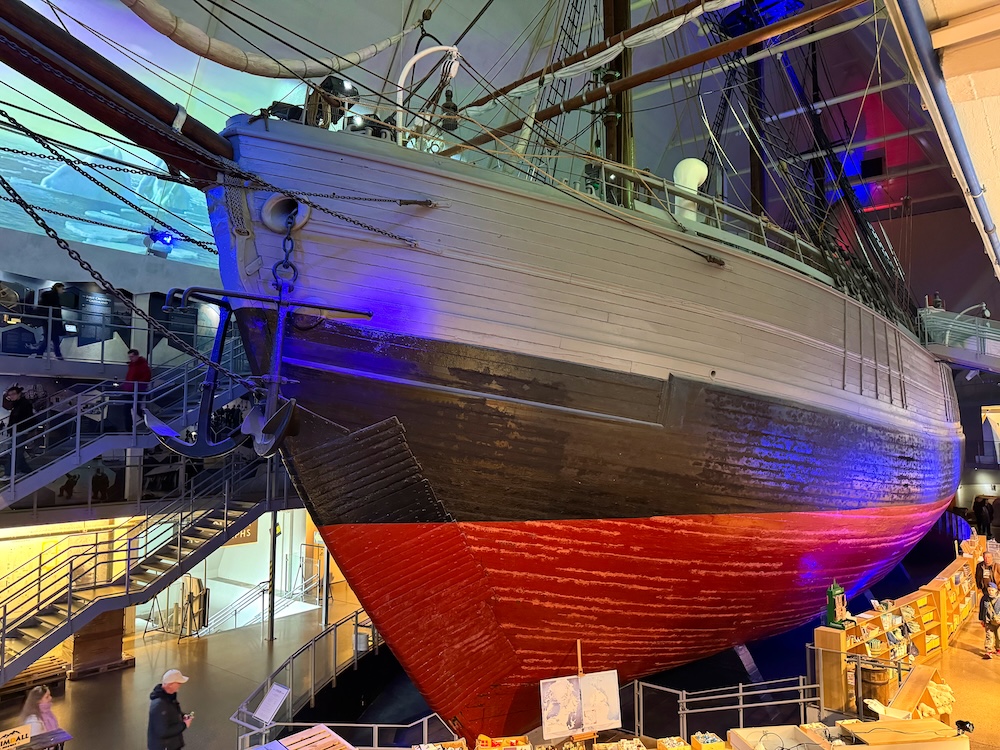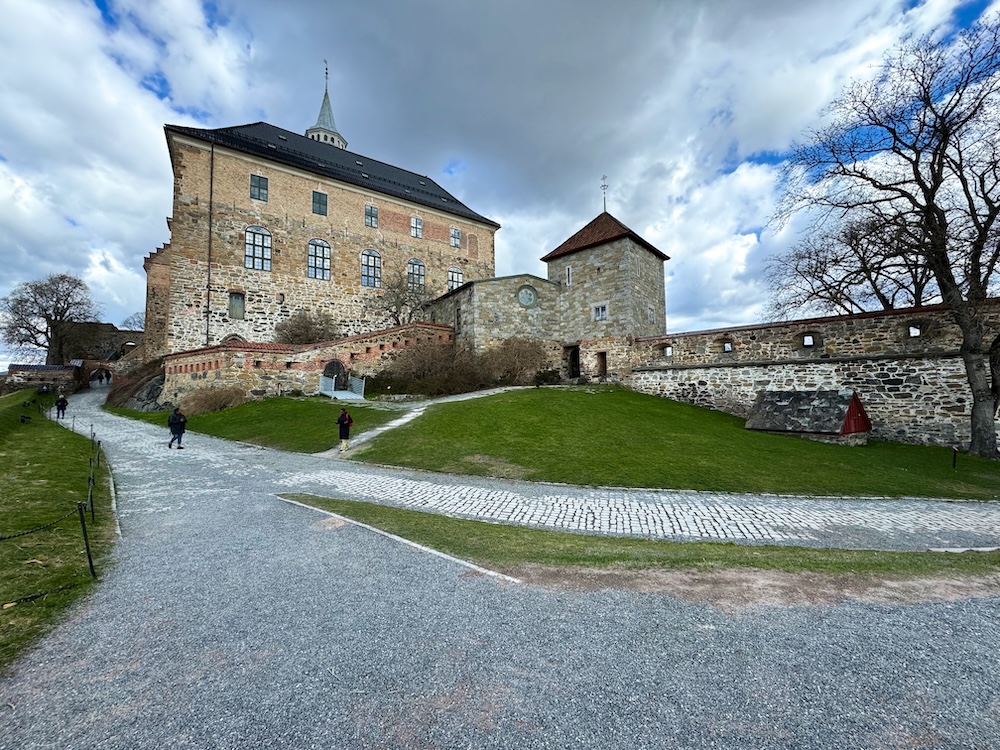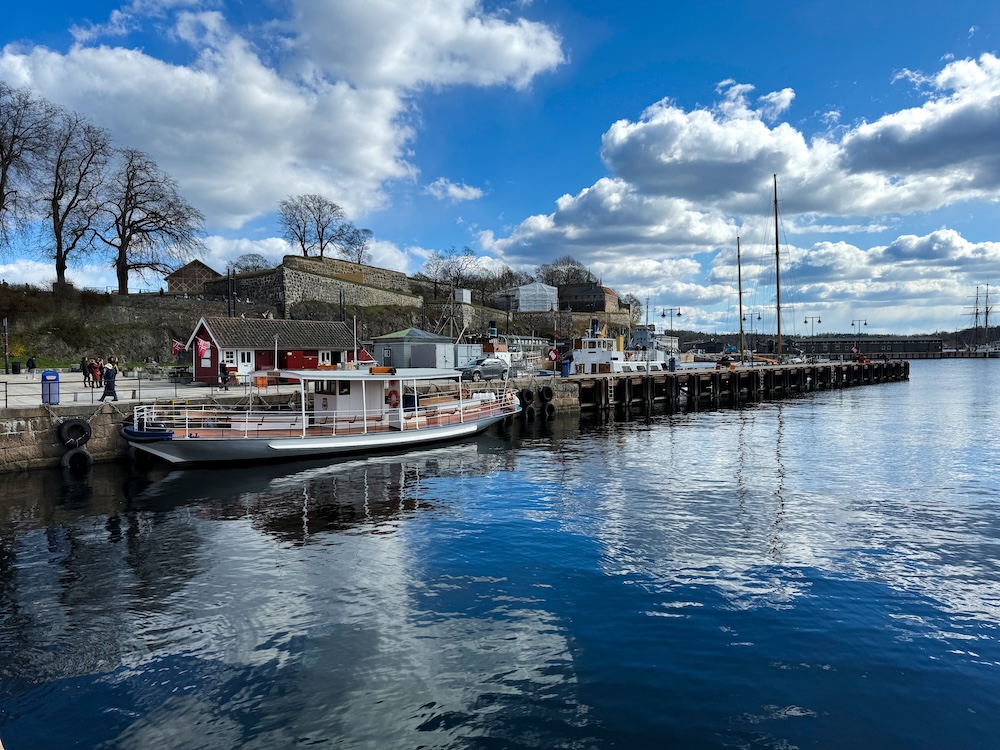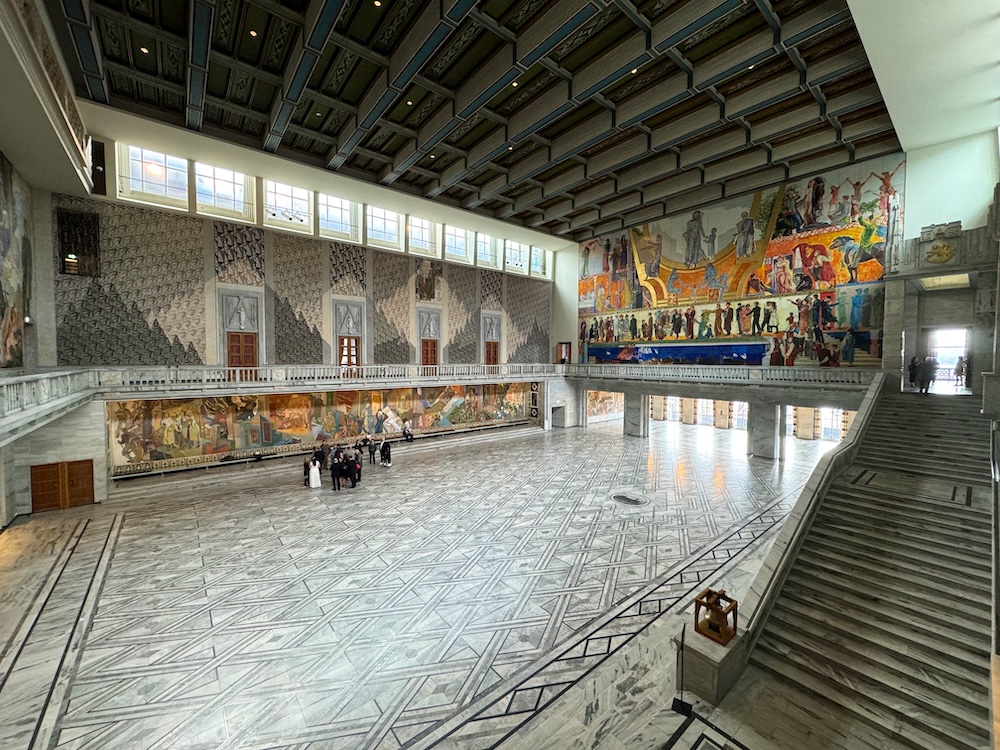Oslo is the capital and largest city of Norway, so many Norwegian itineraries start or end here. While there is incredible beauty all over Norway, I think it’s still worth dedicating one day of your itinerary to exploring Oslo. With one day in Oslo, you’ll have just enough time to visit a museum, wander the Old Town, and get a glimpse of the Oslofjord.
This itinerary is loosely based off my own itinerary. I spent a day and a half in Oslo and took the best parts of that time and pushed it down into just one day.
One Day in Oslo, Norway
This itinerary starts early or late, depending on your perspective. I think it starts late, but that’s because so many of the top sights in Oslo, and other cities in Scandinavia, don’t open until 10:00am. So this itinerary starts a bit later. I recommend taking your time in the morning and getting a filling breakfast since I didn’t leave time for lunch (though you’ll be able to get an early dinner).

9:30 am – Bus to Bygdøy
The first stop of this Oslo itinerary is the Fram Museum, but you’ll need to get a bus out to the museum. Yes, technically you could walk, but you’re looking at an hour and a half walk from the historic city center. I think your time and energy is best spent elsewhere.
Pick up a 24 hour public transportation ticket. You could purchase individual tickets, but you’ll need to take three rides to make a 24 hour pass worth it and with this itinerary you’ll find that the 24 hour pass works out to be a better deal. You can purchase a ticket on through an app, though I read that it can sometimes have issues with foreign cards. So I saved the headache and went to a 7-Eleven and purchased my ticket.
With your ticket in hand, you’ll want to catch bus 30 toward Bygdøy. You can also look into taking a ferry, but I personally took the bus because it was more frequent. Both the bus and ferry will take about a half hour, so you’ll want to leave by 9:30 in order to reach the Fram Museum at its 10:00 am opening time.
10:00 am – Fram Museum
The Fram Museum tells the story of the Fram and Gjøa ships. Both ships were Norwegian explorer ships that went on expeditions through the Arctic region. Their research was groundbreaking and provided a lot of insight into this region. Plus, the actual ships are housed in this museum, so you can walk through them to really get a better understanding of what it was like.
I went to the Fram Museum because I felt like I had to, but I really enjoyed my visit. There is a lot of information in this museum and it can be difficult to take it all in, but I still found it fascinating. Start downstairs by the Gjøa ship. Nearby is a small theater that shows a short film giving an introduction to the arctic exploration. There are headphones for each seat and you can select your language using the dial. After, tour the Gjøa ship before moving back upstairs to tour the larger Fram ship.
I’d recommend giving yourself about an hour and a half to go through the museum. Obviously your exact time may vary, but I find this to be a good average. If you need less time, you can add more time elsewhere. If you need more time, you’ll need to pull some time from elsewhere.
When you’re finished, you’ll want to get back on the bus toward the city center. Rather than getting off in the old town, you’ll want to take bus #30 and get off at Frogner Park.

12:00 – Vigeland Park
Gustav Vigeland was a master sculptor who made hundreds of sculptures during his life time. Now, Vigeland Park, which is located within Frogner park, displays a collection of nearly 200 pieces. And the best part, the park is free to visit, so take your time. Wander and explore the park and appreciate how the statues have a cohesive feel, but are all unique.
These statues line the bridge and then continue on as they circle the monolith, a large statue that’s made up of over 100 figures carved out of one stone. More pieces surround the monolith and this is where most tourists seem to focus their time for the best photo. But you can continue just a little bit further to a few more figures beyond the monolith.
When you’re done at Vigeland Park, you’ll want to look for a bus or tram toward the Akershus Fortress and the Oslo Old Town. Look for bus #31 or Tram #12. You’ll have a little walking on each end of your journey, but taking public transportation will save you nearly 30 minutes of walking.
1:00 – Oslo Harbor Front & Akershus Fortress
Oslo Harbor offers some nice views, but don’t stop just at the harbor. You can visit Akershus Fortress for even more views of the harbor, Oslofjord, and the city. The Akershus Fortress is a castle complex that can be visited for free (though you’ll pay to enter any of the museums). Still, I think wandering this area and taking in the views can be a great way to spend an hour.

2:00 – Oslo City Hall
Nearby Oslo’s harbor, you’ll find Oslo’s City Hall.
Like so many other cities in Scandinavia, I recommend visiting Oslo’s City Hall. While Stockholm hold’s the Nobel Prize Banquet, Oslo’s City Hall is where the Nobel Peace Prize is presented. But beyond the Nobel Peace Prize, it’s still an important local government building.
Inside you’ll find artwork depicting stories from Norway. Take your time in the main gallery to take in the art and lookout out to the harbor. Climb the stairs to see some more art as well a collection of gifts presented from other countries.
Visit to Oslo City Hall is free, but make sure to confirm the hours before you arrive.
2:30 – Oslo Old Town
Take a stroll through Oslo’s Old Town. You can use Karl Johans Gt as a sightseeing spine. This pedestrian street stretches from Oslo’s train station all the way Det Kongelige Slott (Oslo’s Royal Palace). Take your time, enjoy the stroll (and the people watching) as you work your way through the Old Town. Don’t miss the Oslo Cathedral, National Gallery, and National Opera.
This itinerary has time for you to pass several of these sights but you won’t have much time for touring. Personally, I think that’s ok. I visited the inside of the Oslo Cathedral, but had to skip the interiors of everything else, but still left Oslo feeling like I had seen a lot and hadn’t missed too much.
You could also look into a walking tour of the Old Town. I used a DIY tour from Rick Steves and it helped to give context to what I was seeing. Not that just wandering isn’t great, but I really enjoy having that added background information.

4:00 – Grünerløkka
Everything else I’ve mentioned on this list has a focus on history, art, and general tourist activities. This last entry of the Grünerløkka neighborhood is different. While it’s easy to stick to Oslo’s Old Town (and the Bygdøy area for many of the museums), take a stroll through the Grünerløkka. While the Old Town feels busy, Grünerløkka feels more relaxed and more lived in. There aren’t many sights here, but it does give a different feel which alone makes for an interesting visit.
However, if you go deeper into the Grünerløkka neighborhood, you’ll eventually find yourself walking along a river. Keep walking and you’ll find waterfalls, which is probably not what you’re expecting in a capital city.
To reach the waterfalls, you’ll either have a long walk from the Old Town or will have to catch some kind of transportation. Since you have the public transportation ticket, save your feet and jump on a bus (#37) or tram (#18) to the Grünerløkka neighborhood. When you’re done, catch public transportation back to your hotel (or to dinner).
Is One Day in Oslo Enough?
While there is a lot crammed into this one day in Oslo, I think it’s enough time in the city. One day in Oslo gives you enough time to see the highlights. There are absolutely other things that you could do in Oslo. However, rather than spending your time in Norway digging into every nook and cranny of the capital, I’d recommend spending extra time in nature. Norway is stunningly beautiful and you’ll want to take in as much of that gorgeous scenery as possible.

Getting to Oslo, Norway
Oslo can be reached by train (via its central train station), by bus (the main bus station is connected to the train station), or by plane.
For those arriving by plane, you can take a train into the city. A local train will be a cheaper, by if you’re in a hurry (or it’s too early in the morning for the local train to be running), you can use the FlyJet service. Note that the FlyJet service costs twice as much as a local train. While I used it and had no issues, take the local train if you can and save some money.
Getting Around Oslo, Norway
If you plan to stick to the historic Old Town, Oslo is easy to explore on foot. You can reach the Oslo Harbor Front (including Akershus Fortress), City Hall, National Gallery, and Royal Palace with minimal effort. I also walked to Grünerløkka and its waterfalls, but I’ll be the first to admit it was a long walk.
If you plan to visit some of Oslo’s Maritime Museums, you’ll want to purchase a public transportation ticket. I bought one 24 hour pass (from a 7-Eleven as the metro station I went to had no ticket machines) and then worked all of my further destinations into one day.
A one way ticket costs 42 NOK, while a 24 pass costs 127 NOK. If you plan to take at least three journeys, just get the 24 hour pass.

When to Visit Oslo, Norway
Winters have the fewest visitors and therefore you can expect a slightly lower price. However, winters have the worst weather (expect it to be cold) and have limited daylight. For example, in Oslo, the sun rises around 8:30 am and sets at about 3:30 pm in January.
Summers have long days with the sun not setting until 9:00 or 10:00 pm. You’ll also have the best weather. However, crowds are at their highest.
Typically, shoulder season can offer the best mix between daylight hours, weather, and tourist crowds. But I personally would recommend traveling very late spring to very early summer or very late summer into very early fall. Basically, try to catch that cut over between spring and summer or summer and fall.
I traveled in mid April and it was a bit chilly, especially in the mornings. I did ok, but I definitely would have preferred it to be just a little bit warmer. Plus some sights still had limited hours. If I were to do this trip again, I’d aim for late May or early June.
Final Thoughts
There is so much more to Norway than just Oslo, but that doesn’t mean that the entire city is skippable. So give your itinerary one day in Oslo and see a bit of the city before heading to the fjords and countryside.
Continue Your Adventure
Scandinavia: Start planning your trip to Scandinavia with this 10 Day Itinerary or this 7 Day Itinerary, featuring stops in Denmark, Sweden, and Norway. Check out my Scandinavia Budget for a realistic look at travel costs and budgeting tips. Plus, here’s my top tips for traveling Scandinavia.
Denmark: No visit to Denmark would be complete without spending at least one day in Copenhagen, where you can tour several churches and have some fun at Tivoli Gardens. Plus, learn more in my Denmark Travel Guide.
Sweden: A visit to Sweden will generally include its capital city of Stockholm, which is full of awesome sights and museums. If you have extra time in Stockholm, consider a day trip to either Uppsala or Drottningholm Slott. But don’t miss Gothenburg, another great city that feels more relaxed than Stockholm. Continue your planning with my Sweden Travel Guide.
